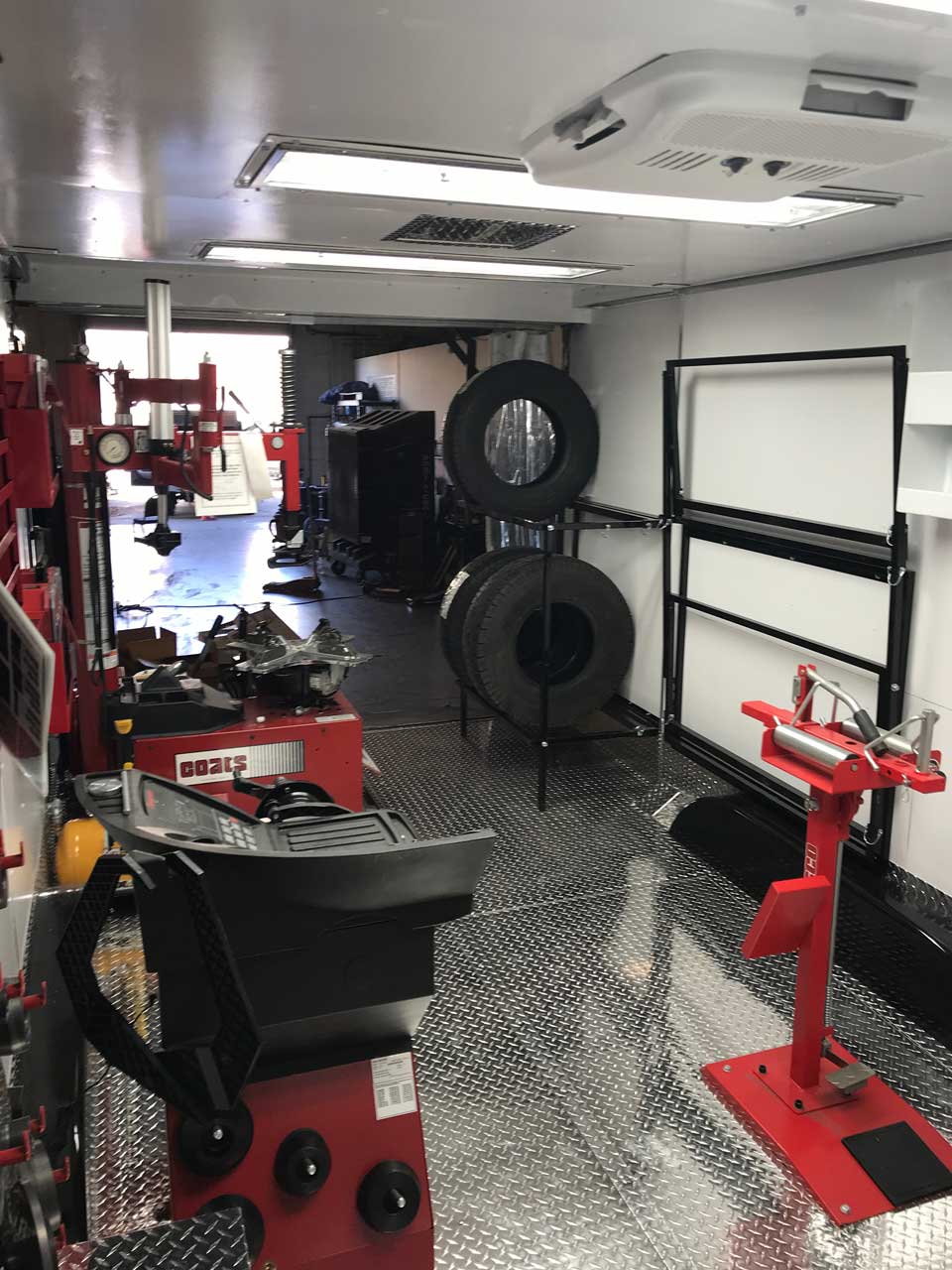Premium Mobile Tire Replacement Las Vegas - Top Quality Assured
Premium Mobile Tire Replacement Las Vegas - Top Quality Assured
Blog Article
Tire Service: Proven Techniques for Optimum Tire Upkeep and Care
Maintaining ideal tire problem is vital for both security and performance of any type of automobile. From making certain correct tire pressure to routine turning and placement, there are proven techniques that can substantially expand the life-span of your tires and enhance general driving experience. As we explore the ins and outs of tire care and upkeep, we will certainly reveal crucial guidelines that every automobile proprietor should abide by for the finest possible outcomes. Allow's look into the globe of tire solution and uncover the secrets to maintaining your tires in first-class shape for the long run.
Relevance of Tire Stress
Sufficient tire pressure advertises better fuel effectiveness, as under-inflated tires can lead to enhanced rolling resistance, causing the engine to work tougher and consume more fuel. Right tire pressure makes sure also tread wear, enhancing tire durability and conserving money in the long run by delaying the requirement for early replacements. Frequently examining and readjusting tire stress, specifically in the past long journeys, is a simple yet reliable way to boost automobile performance, extend tire lifespan, and focus on security on the road.
Tire Rotation Guidelines
When taking into consideration tire rotation standards, it is essential to understand the importance of this upkeep job in optimizing tire life-span and keeping optimal lorry performance. Tire rotation involves transforming the position of each tire on a lorry to make certain also step wear. Front tires have a tendency to wear a lot more swiftly than rear tires due to steering pressures, making routine rotation essential for well balanced wear patterns. The recommended rotation pattern varies depending upon whether a lorry is front-wheel, rear-wheel, all-wheel, or 4x4. Commonly, tires must be turned every 5,000 to 7,500 miles, or as recommended in the car manual. Ignoring tire rotation can lead to unequal wear, affecting handling, grip, and possibly compromising car safety. By sticking to appropriate rotation standards, chauffeurs can extend the life of their tires, boost gas efficiency, and improve general driving experience. Routine turning is a simple yet effective maintenance technique that contributes significantly to tire long life and car performance.

Benefits of Wheel Positioning
Ensuring appropriate wheel placement after tire turning is crucial for preserving balanced wear patterns and maximizing car efficiency. Wheel placement describes the change of the angles of the wheels to the producer's specs. Among the key benefits of wheel positioning is boosted dealing with and guiding feedback. When the wheels are properly aligned, it decreases steering initiative, ensuring a smoother and a lot more controlled driving experience. Furthermore, right wheel positioning assists to prolong the lifespan of your tires. Misaligned wheels can cause uneven tire wear, leading to premature tire replacement and enhanced upkeep costs.

Tire Tread Deepness Check
Doing a routine examination of tire walk deepness is important for maintaining secure driving conditions and extending the life expectancy of your tires. The tread on your tires plays a vital function in providing traction, specifically in damp or slippery problems. To inspect your tire step deepness, you can utilize a step deepness gauge or the dime test. The suggested step depth goes to least 2/32 of an inch. If the step depth is below this threshold, it is time to replace your tires to make sure optimum efficiency and safety when traveling. Uneven walk wear can indicate problems with tire positioning, suspension, or stress, highlighting the importance of regular tread depth checks. Ignoring to monitor and maintain proper tread deepness can bring about decreased grasp, longer stopping ranges, and a raised risk of hydroplaning. By including tire tread depth check out your regular upkeep timetable, you can drive with self-confidence understanding that your tires are in leading problem.
Seasonal Tire Examination
A detailed analysis of tire problem customized to particular weather problems is essential Visit Website for keeping ideal performance and safety and security throughout the year. Seasonal tire inspection is a basic facet of tire upkeep that guarantees tires prepare to face the difficulties postured by various weather condition conditions. To prepare for winter, it is necessary to check the tire pressure on a regular basis as cool temperatures can trigger tire stress to drop. Checking tire walk deepness is also crucial to ensure appropriate grip on snow and frozen roadways. Additionally, looking for indications of damage, such as cracks or lumps, can help stop prospective tire failings. As the periods adjustment, it is essential to evaluate tire condition and make any kind of necessary adjustments to guarantee risk-free driving. By conducting regular seasonal tire inspections, chauffeurs can prolong tire life expectancy, improve fuel efficiency, and most importantly, ensure a secure driving experience in varying climate condition - Mobile Tire Service Las Vegas.
Verdict
To conclude, maintaining correct tire pressure, rotating tires on a regular basis, aligning wheels appropriately, keeping track of tread deepness, and performing seasonal inspections are necessary practices for optimum tire care. By complying with these verified approaches, drivers can guarantee their tires last much longer, do much better, and add to total car safety and security. It is essential to focus on tire maintenance to avoid crashes, improve fuel effectiveness, and prolong the life-span of tires.
Adequate tire pressure promotes much better gas efficiency, as under-inflated tires can lead to boosted rolling resistance, triggering the engine to work tougher and consume more fuel.When thinking about tire rotation guidelines, it is necessary to recognize the importance of this maintenance task in making the most of tire life expectancy and preserving ideal automobile efficiency. Seasonal tire inspection is a basic facet of tire upkeep that makes certain tires are all set to encounter the difficulties posed by different weather problems. By conducting regular seasonal tire inspections, vehicle drivers can lengthen tire life-span, boost fuel effectiveness, and most importantly, ensure a secure driving experience in differing climate problems.
In conclusion, keeping appropriate tire pressure, rotating tires routinely, aligning special info wheels appropriately, keeping track of walk depth, and conducting seasonal examinations are essential practices for ideal tire care.
Report this page